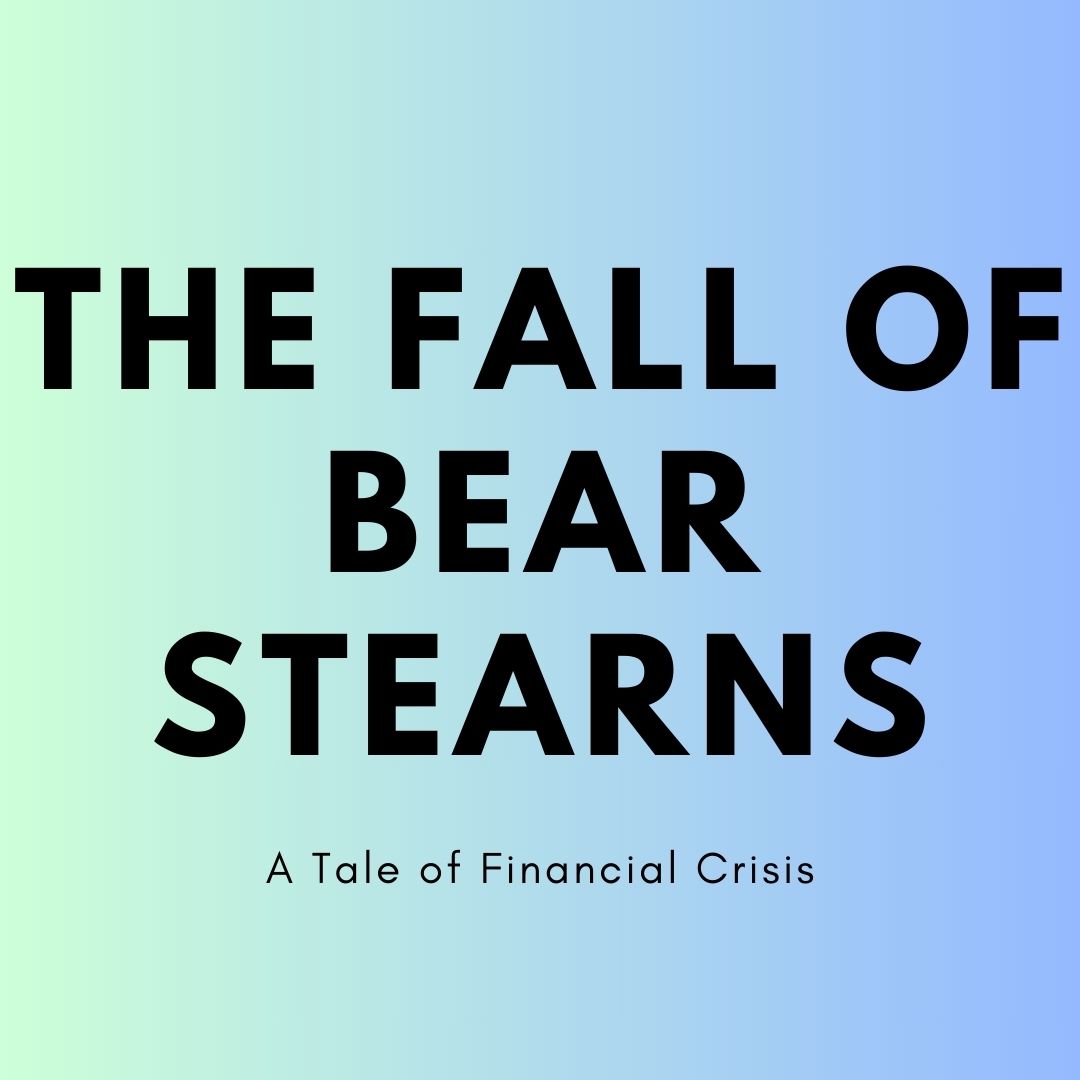The Fall of Bear Stearns: A Tale of Financial Crisis
- 7 September 2023 | 559 Views | By Mint2Save

In the annals of financial history, few events stand out as starkly as the collapse of Bear Stearns in 2008. What was once a Wall Street powerhouse, with a storied history dating back to 1923, saw its demise in a matter of days, sending shockwaves through global financial markets and serving as a harbinger of the broader financial crisis that would soon engulf the world. This article delves into the rise and fall of Bear Stearns, dissecting the factors that led to its failure and the profound consequences it had on the global economy.
The Ascent of Bear Stearns
Bear Stearns began its journey as a securities brokerage and investment banking firm in New York City. Over the decades, it weathered many financial storms and established itself as a respected institution on Wall Street. The firm’s specialization in fixed-income trading and asset management made it a formidable player in the financial industry.
One of the defining features of Bear Stearns was its tight-knit and risk-taking culture. The company’s leadership, particularly its CEO, Jimmy Cayne, was known for their appetite for risk and their belief in the prowess of their proprietary trading desks. This culture led the firm to significant profits in the years leading up to the financial crisis.
The Mortgage Meltdown
The seeds of Bear Stearns’ downfall were sown in the mortgage market. In the early 2000s, there was a housing boom in the United States, driven by easy access to credit, lax lending standards, and a fervor for homeownership. Financial institutions across the board jumped into the mortgage-backed securities (MBS) market, eager to capitalize on the seemingly boundless appetite for housing.
Bear Stearns was no exception. The firm had substantial exposure to mortgage-backed securities and collateralized debt obligations (CDOs) linked to subprime mortgages. As the housing bubble began to burst in 2006, the value of these assets plummeted. The firm’s balance sheet, once robust, started to show signs of weakness.
Liquidity Crunch
By early 2007, Bear Stearns was grappling with a liquidity crisis. Investors, including other financial institutions, began to doubt the quality of the assets on Bear Stearns’ books and started to withdraw their investments. This sudden loss of confidence triggered a vicious cycle: as investors pulled out, Bear Stearns had to sell assets at fire-sale prices to meet its obligations, which further eroded its financial stability.
The Federal Reserve recognized the severity of the situation and stepped in to provide temporary funding support to Bear Stearns. This move was unprecedented and underscored the systemic risk that Bear Stearns’ collapse could pose to the entire financial system. It was a clear signal that something was deeply wrong in the heart of Wall Street.
The Weekend that Shook Wall Street
The pivotal moment in Bear Stearns’ downfall occurred over a fateful weekend in March 2008. As rumors swirled about Bear Stearns’ financial woes, clients and counterparties began to pull their business away from the firm, precipitating a full-blown liquidity crisis. Facing imminent bankruptcy, Bear Stearns had little choice but to seek help.
In a dramatic turn of events, Bear Stearns’ executives, including its CEO Jimmy Cayne, held marathon discussions with potential acquirers. Ultimately, JPMorgan Chase, with the support of the Federal Reserve, agreed to acquire Bear Stearns at a drastically reduced price. The deal valued Bear Stearns at just $2 per share, a shocking decline from its previous market price of around $150 per share.
This acquisition, arranged under immense pressure and over a weekend, was seen as a rescue mission to prevent Bear Stearns’ collapse from causing a cascading effect on other financial institutions. The deal was backed by a $29 billion loan from the Federal Reserve, effectively making the U.S. central bank a financier of last resort.
The Aftermath
The Bear Stearns episode marked a pivotal moment in the unfolding financial crisis. It exposed the vulnerabilities in the global financial system, particularly the interconnectedness of financial institutions and the opaque nature of the complex financial products they traded. Financial Crisis : 7 Tips to Make Money & protect yourself
Bear Stearns was not the only institution facing trouble during this period. Lehman Brothers, another venerable Wall Street firm, would follow a similar path just six months later, filing for bankruptcy in September 2008. The reverberations of these failures led to a full-blown global financial crisis, with severe consequences for economies worldwide.
The fallout from Bear Stearns’ collapse included a crisis of confidence in financial markets. Counterparty risk became a paramount concern, and institutions became increasingly wary of lending to one another. The credit markets froze, and the flow of credit, essential for economic growth, ground to a halt.
Regulatory Responses and Reforms
In the wake of the Bear Stearns collapse and the broader financial crisis, regulatory authorities around the world embarked on a series of reforms aimed at preventing such a catastrophic event from happening again. The Dodd-Frank Wall Street Reform and Consumer Protection Act, signed into law in 2010, brought about significant changes to the financial regulatory landscape in the United States.
Key provisions of Dodd-Frank included increased transparency and oversight of derivatives markets, the establishment of the Financial Stability Oversight Council (FSOC) to monitor systemic risks, and the creation of the Volcker Rule, which restricted proprietary trading by banks.
Conclusion
The collapse of Bear Stearns in 2008 serves as a cautionary tale about the perils of excessive risk-taking, opacity in financial markets, and the interdependence of global financial institutions. It was a stark reminder that even the most venerable and seemingly invincible financial giants can crumble when exposed to the harsh realities of a financial crisis.
Enron Bankruptcy: Reason of Collapse | Facts | Conclusion
The rescue of Bear Stearns by JPMorgan Chase and the Federal Reserve averted an even more catastrophic outcome, but it did little to prevent the broader financial crisis that would follow. Ultimately, the events surrounding Bear Stearns’ failure serve as a stark reminder of the importance of robust risk management, effective regulation, and transparency in the world of finance. The lessons learned from this episode continue to shape the financial industry and regulatory landscape to this day.










